Mobile App for Fitness Influencers: How to Turn Your Social Media Followers into Paid Subscribers
You’ve come a long way: You have enough followers to be called an influencer. You get revenue from partnerships and ads, but in the end your followers’ money goes to the brands you advertise. How can you create an additional source of revenue from your Instagram profile? We have an answer.
Why create a fitness app for your followers?
As an Instagrammer, you know that your followers spend lots of time on their phones. As a fitness expert, you can not only give your followers recommendations via Stories and Instagram posts but also provide them with your own fitness app.
Currently, mobile fitness applications are more popular than personal training sessions: they’re considered more convenient and cost-effective, especially among young people who are active mobile users.
According to Flurry Analytics, 33% of fitness app users open these apps 2 to 5 times a week. For 26% of users, the number is over 10 times a week. Not every type of app in every other domain can boast such user engagement.
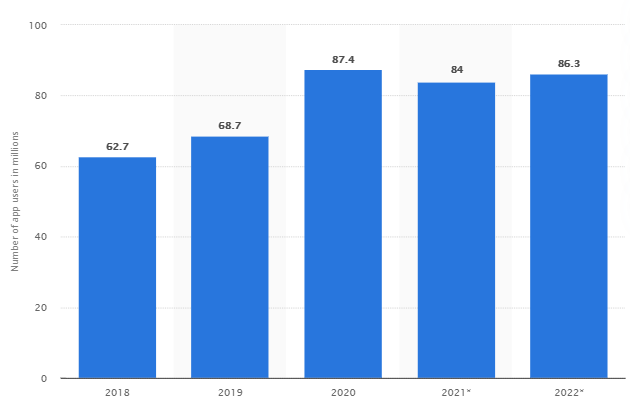
This engagement means easier monetization: people are more likely to pay if they use your app often and see real value in it. As an Instagram blogger, you’ll also have the advantage of lots of loyal users. You’ve built up loyalty already with your Instagram account, so you’ll definitely find it easier to promote your app and get paying users.
In this article, we’ll talk about the advantages of fitness applications for Instagram influencers and ways you can monetize your Instagram follower base.
5 ways to boost your Insta business with an app
There are many ways you can use a mobile application as a marketing tool or a standalone source of revenue.
1. Provide personal training sessions
If you offer personal training for your followers, you’re limited by your location: your own city is probably the only place where you can meet your target audience in person. With a mobile app, you can provide services to your followers all over the world.
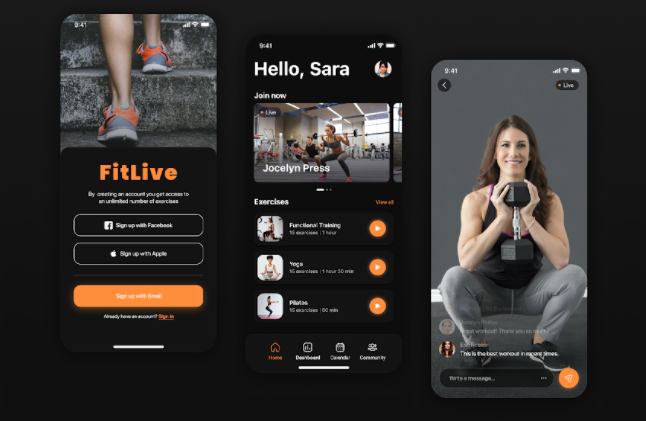
2. Turn your followers into subscribers
The difference between followers on social media platforms and subscribers in mobile apps is the money they bring you. While followers don’t provide direct income, subscribers constantly pay in an app for better content, a personalized approach, and useful features.
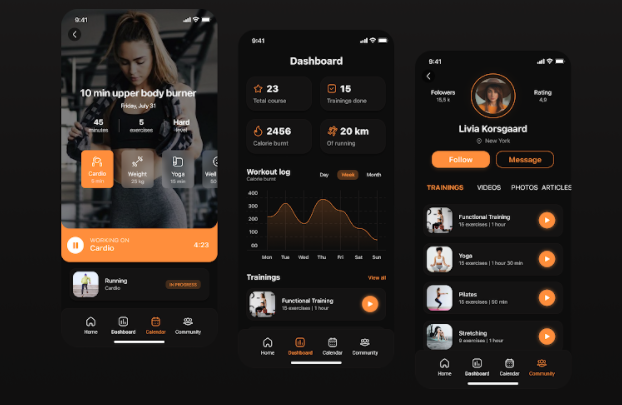
As a fitness professional, you can create different fitness programs for your subscribers. Mobile app logic can help you make these programs personalized, and this will drive your app’s value even higher.
3. Challenge and connect
Engage your followers with interesting challenges. Losing weight, eating healthy, or even doing a certain number of pushups – all these can be great challenges. To motivate people even more, you can gather them in a group chat and allow them to compete with each other.
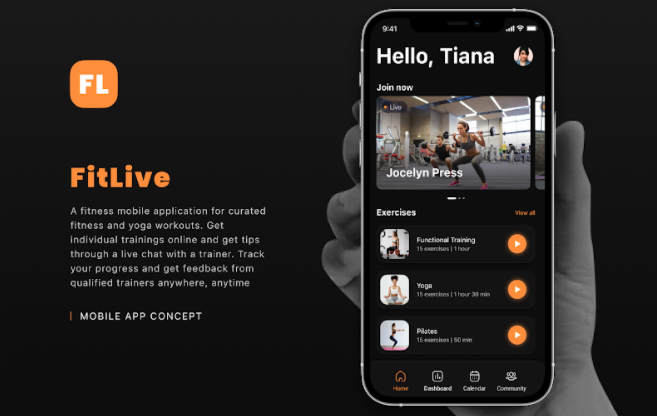
You can monetize participation in your challenges and get your app users to share their achievements online. This will create your own brand ambassador army, and your number of followers and app users will grow naturally.
4. Get everything in one place
If you produce content for several platforms – for example, Instagram, YouTube, and your personal blog – a mobile app can aggregate all of that content in one place. Why is this useful?
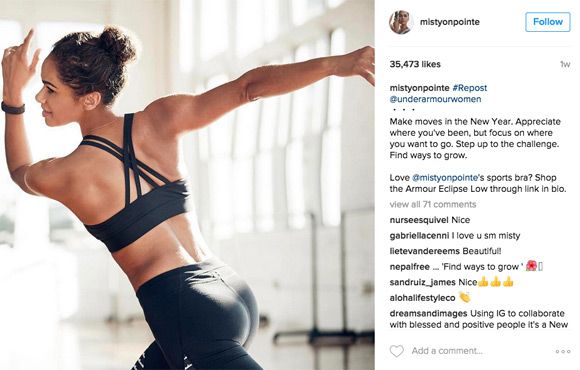
First of all, it gets people more engaged with your content, as you can offer them different formats at once instead of asking them to check out each of your channels.
You can also make your training plans more engaging by providing different content formats: for example, you can alternate YouTube tutorials with Instagram photos and posts.
This will help you grow your user base and engage people with your content even more.
5. Sell your merch and branded products
Selling and promoting products in a mobile app is extremely easy. You can showcase all your products in one categorized catalog. Unlike on Instagram, where everything is mixed, a mobile app lets users see all your products at once, filter them, and search conveniently.
You can also integrate payment gateways to allow for instant purchases and promote your new products with the help of push notifications. While some of your followers may miss an Instagram post, a push notification will always keep them in the loop.
Must-have features
Onboarding
Onboarding includes the whole process from registering in your application to taking the first steps in it. Onboarding can be very simple, including just a registration screen, or feature a tutorial that guides users through your app.
A tutorial is often necessary for large and complex apps. To focus on your main functionality, we’d advise adding it later if needed.
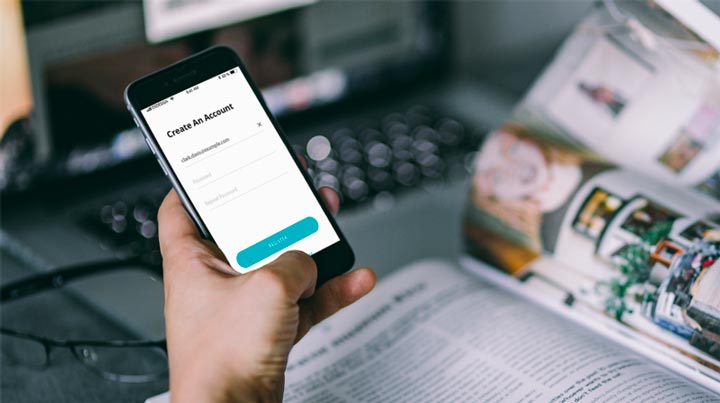
Login
Login is rather simple functionality to implement, but you need to choose ways of logging in. For example, users may log in via phone number, email, or social media accounts. As you already have a large social media follower base, social media login is your best choice, although we’d advise adding one more method.
Personal profiles
Personal profiles should include basic information about users. If you plan to add nutrition and workout programs to your app, users should be able to see their progress and initial results.
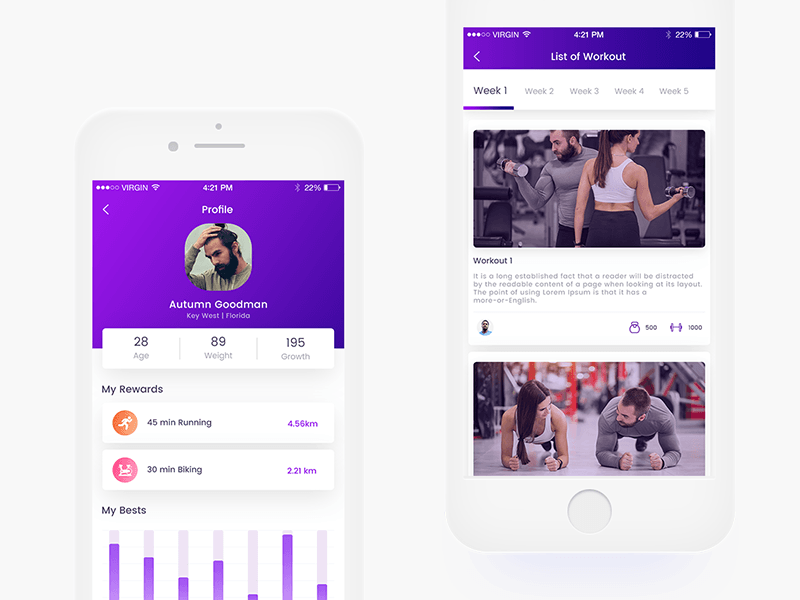
Nutrition calendar
A nutrition calendar contains meal plans and recommendations and can also include recipes. Allow your users to add recipes to their favorites and make notes about eating habits.
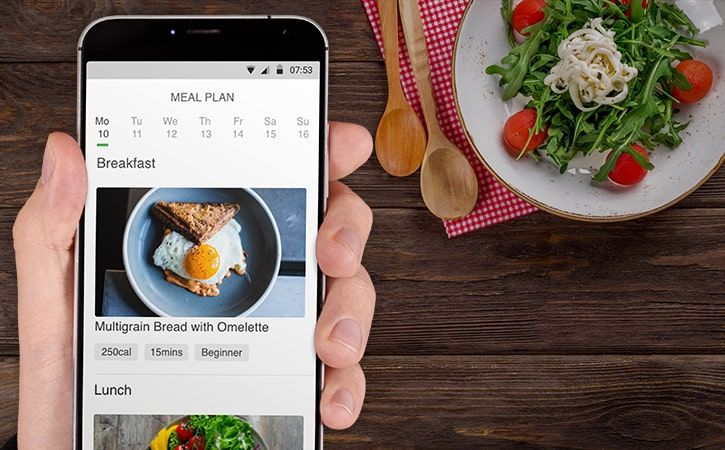
If you want to go big, you can also add a calorie calculator and monetize it through in-app purchases.
Videos and photos
Media content is the most important part of your business, and your app should focus on it. Regularly add video tutorials, photos, and animated instructions to engage users with new content – and monetize that content.
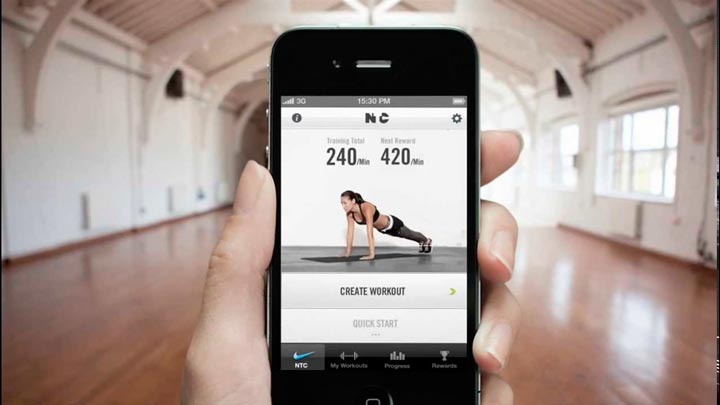
Social media integration
To aggregate all your content in an app, you want to integrate your social media accounts and create a single news feed that will provide your users with all the content you produce.
Integrate content from Instagram, Facebook, YouTube, and other platforms you normally use, and allow people to repost this content. This will help you attract new followers and turn them into customers.
Blog
Your personal blog can also become a valuable part of your app. You can either include blog posts in the news feed or create a separate part of the app for your articles.
Private chat
To motivate your users and allow them to compete with each other during challenges, you can use private chats to communicate, provide your followers with advice, and let them share their achievements.
Online shop
If you plan to sell branded products, you’ll need an online shop in your application. It can consist of a catalog, product pages with photos and descriptions, and a checkout where people can buy your products.
Payment gateway
To allow users to pay for your products in the mobile shop, you’ll need a payment gateway. There are different gateways, each with its own terms, coverage, and commissions.
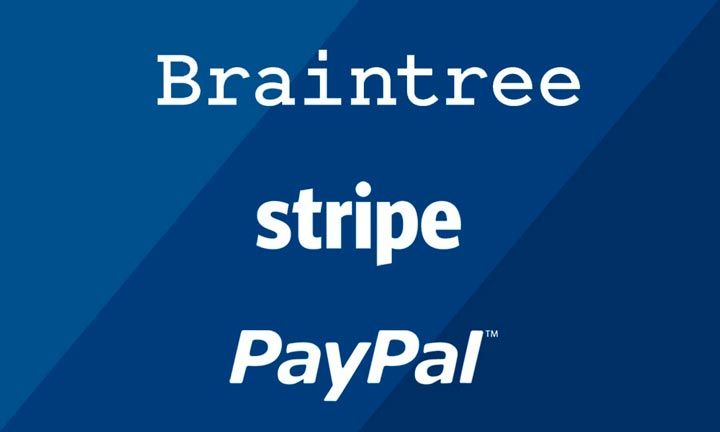
We normally advise integrating PayPal, Stripe, or Braintree: these are the leaders in mobile payments, and they provide secure and fast transactions.
The commission fees for payment gateways are usually around 3%, plus $0.30 per transaction.
In-app payments
To turn your followers into paid subscribers, you’ll need to implement in-app payments. They allow users to purchase content and additional features inside an app.
For example, you can offer paid meal plans.
Another strategy is to create a basic free app and add advanced features or content for subscribers. This will create a more steady flow of income, as people will pay you on a monthly basis.
Video streaming
Video is the type of content that engages users most. You probably already stream your videos on Instagram and YouTube. Why not do so in your app? Stream your training sessions, Q&As, webinars, and so on to engage users.

Wearables integration
A full-fledged fitness tool should connect to wearables such as smartwatches and fitness bands. Integrate wearables support to display activity data inside your app.
Cost of a fitness app for a personal brand
Your app doesn’t have to be complex to attract users and turn them into paying subscribers. However, it’s difficult to tell exactly how much such an app will cost.
Overall, the price of app development depends on these parameters:
- Complexity of features
- Size of the app
- Set of technologies and tools
- Paid third-party services (e.g. Google Maps, which is paid when integrated in applications)
- Location of the development team
- Hourly rate of the development team
The biggest impact on development cost is the hourly rate of developers. This depends on the company, but mostly on the location.
While developers in the US charge around $160 per hour, developers in Eastern Europe charge around $35 per hour. This means that the same app that costs $5,000 to develop in Eastern Europe will cost over $20,000 if developed in the US.
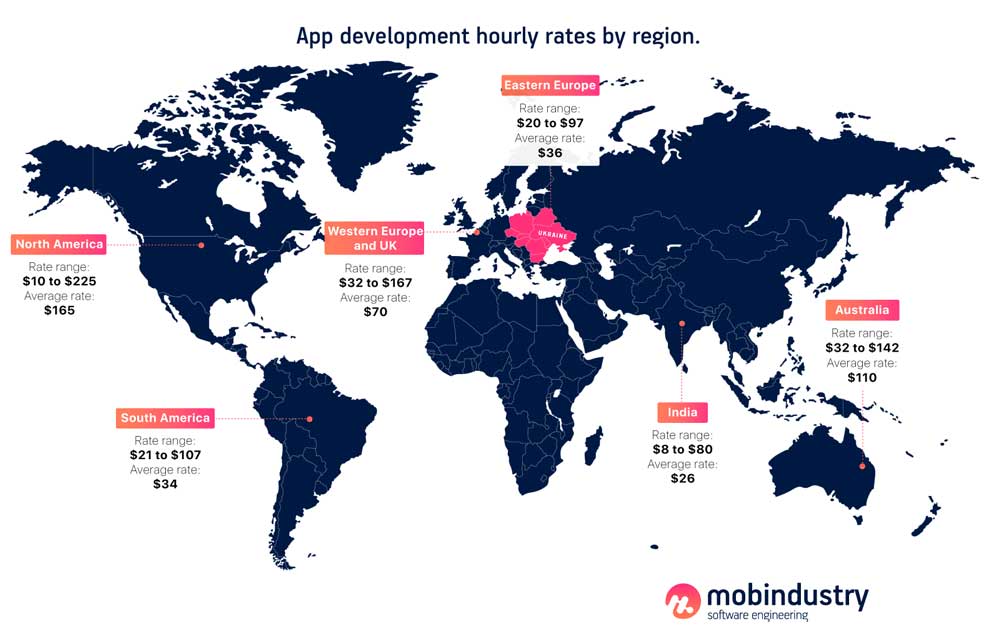
Now let’s talk numbers. Here’s a table with most of the features you’ll need for your fitness app. You might not need all of them; your feature set will depend solely on your business goals.
We’ve estimated the time developers will need to implement each feature in hours. To find out the price of your app, multiply the number of hours by the hourly rate of the development team you’re planning to hire.
If you plan to create two native apps, one for Android and one for iOS, multiply the final sum by 1.75.
Remember that you can also choose cross-platform technologies that will allow you to build one app for both platforms. This will require a smaller budget, but the quality of the app will also be a bit lower.
| Features | Min–max, hours |
| Login / Registration / Forgot (reset) password | 22–36 |
| User profiles | 18–24 |
| Dashboard (challenges, nutrition, personal training, events, blog) | 18–24 |
| Challenges | |
| Create and edit challenge | 20–26 |
| Countdown timer | 2–5 |
| Private groups (create, edit, manage) | 20–26 |
| Exercise videos | 16–20 |
| Internal chat | 18–24 |
| Personal goals | 6–10 |
| Statistics | 16–24 |
| Progress | 6–10 |
| Results | 6–10 |
| Nutrition | |
| Recipes | 16–22 |
| Custom calorie meal plan | 20–26 |
| Calorie calculator | 10–15 |
| Online store (nutrition, equipment, clothing) | 70–100 |
| Personal video content | 18–24 |
| Payment system integration | 20–32 |
| YouTube and Instagram channel synchronization | 10–15 |
| Push notifications | 8–16 |
| Deep links integration | 8–16 |
| Design | 40+ |
| Testing | 30% of total |
Note that this estimate includes features only. To have a clearer picture of the budget you’ll need for your app, you need to also consider time for:
- Technical specifications
- Communication
- Preparation for development
- Quality assurance
- Design
Successful apps from fitness influencers
Fit Body App
Anna Victoria is one of the top Instagram influencers committed to making your workout as easy as possible. He offers three different workouts in his app: Tone, which includes strength and cardio, Shred, which focuses on high-intensity bodyweight exercises, and Sculpt, which is designed to build strength in the gym.
She also offers member-only Facebook pages and newsletters so that they can connect with other girls in the FBG to promote workouts and meal plans together.
FIT
Emily Skye, an Australian fitness model turned personal trainer, has developed plans to allow her to exercise from home or go to the gym. Each plan consists of five new workouts per week. Bonus fact: After her first pregnancy, Emily actually used her own app to start exercising again and documented it all on her Instagram.
Conclusion
A mobile application is often the next step for a business that wants to increase customer loyalty and create an additional source of revenue. If you as an Instagram fitness influencer feel you’ve reached your limit on Instagram, a mobile app can be your next frontier.
While other businesses often struggle to gain users for their apps, this won’t be the case for you, as you already have active mobile users that are loyal to you.
If you as an Instagram fitness influencer feel you’ve reached your limit on Instagram, a mobile app can be your next frontier
Offer new exclusive fitness programs, challenge your followers, and turn them into paid subscribers that will increase your revenue.
At Mobindustry, we’ve already made several successful mobile fitness applications. Contact us to find out more about our experience and services.

